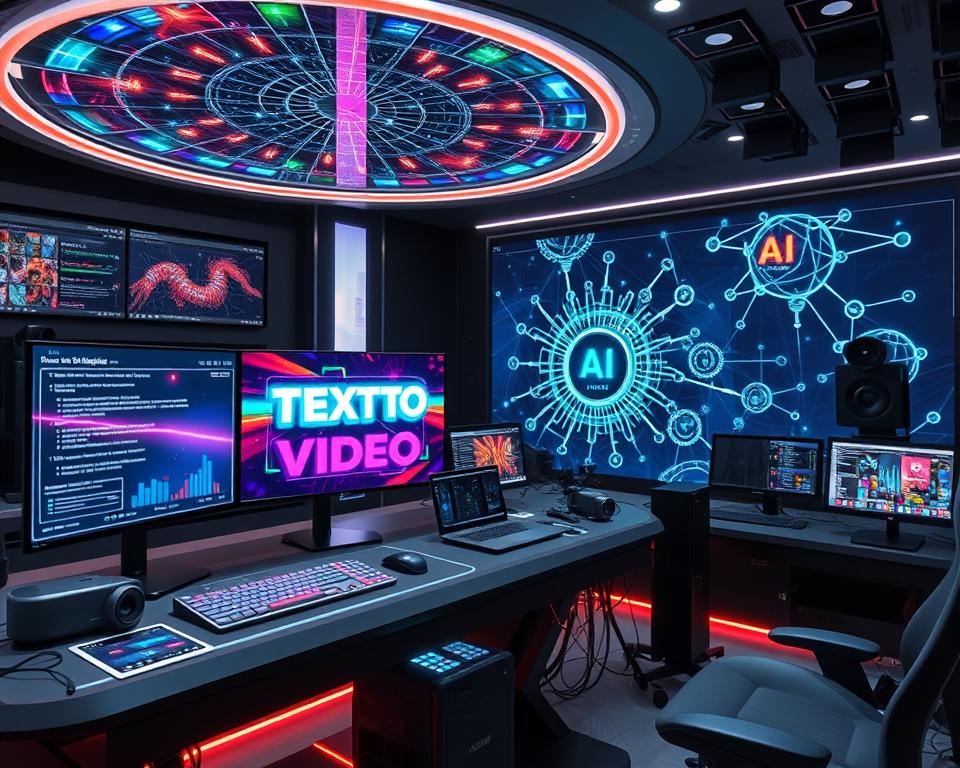In 2025, AI text to video technology changes how companies make and share videos. It uses smart learning models to turn written texts into lively videos. This tech, powered by deep learning, like Generative Adversarial Networks (GANs), is changing the game in the SaaS world. It’s making it easier for businesses to teach, support, and connect with people.
This tech is all about linking words to pictures. It learns from huge amounts of text and video pairs. This lets companies make special videos that didn’t exist before. It makes making videos faster and better for talking to people.

Key Takeaways
- AI text to video technology uses deep learning to make written content into moving videos.
- In 2025, AI video making is set to lead the SaaS world, changing how businesses talk and connect with people.
- This tech uses advanced learning, like Generative Adversarial Networks (GANs), to make unique videos from text.
- AI text to video makes making videos easier, letting companies create special content quickly.
- The mix of natural language and deep learning in AI text to video could greatly affect many fields, like marketing, education, and media.
Understanding AI Text to Video Technology
In today’s fast-changing world, AI text to video tech is changing how we make and watch videos. It uses natural language processing, multimodal AI, and video synthesis to turn text into engaging videos.
Core Components and Processing Methods
AI text to video tech has deep learning models and natural language processing at its core. These parts work together to understand text, create visuals, and make scenes move. They bring stories to life.
Deep Learning Models in Video Generation
Deep learning models, like Generative Adversarial Networks (GANs), are key to AI text to video tech. They learn from huge text-video datasets. This lets them make videos that look real and keep the story together.
Natural Language Processing Integration
Natural language processing is vital for AI text to video tech to get text right. It uses special techniques to understand text fully. This way, it turns text into videos that really show what the text means.
This mix of deep learning and natural language processing makes videos that match the text well. They keep the story, feelings, and overall sense of the text. As it gets better, AI text to video will change content making in many fields, like marketing, entertainment, and education.
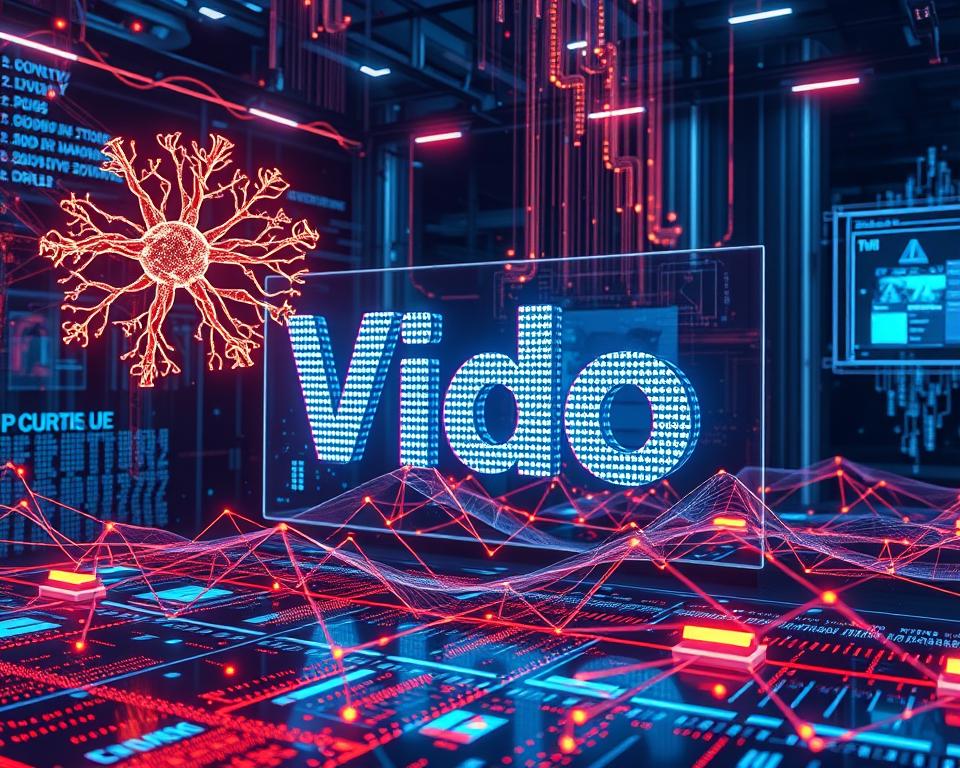
“The integration of AI into video production leads to more efficient and faster content creation processes, enriching creativity and resonating better with specific audiences.”
Leading Text-to-Video AI Models in 2025
In the fast-changing world of ai text to video tech, new leaders are rising in 2025. These top text-to-video ai tools are changing how we make content. They let users turn text into real, high-quality videos.
Sora from OpenAI is a big name. It can make detailed videos up to 1 minute long. Its smart tech makes scenes look real, changing how we see text-to-video ai.
Runway Gen-3 Alpha is another key player. It lets users make videos from text and images. This mix gives creators more control over their work.
Kling AI by Kuaishou is also leading the way. It can make videos up to 2 minutes long at 1080p. Its smart tech makes it great for many types of content.
Other top models include Luma Dream Machine, MiniMax, CogVideoX, Make-A-Video by Meta, ModelScope by Alibaba, Stable Video Diffusion, and Phenaki by Google. Each has special features, like better resolution or making short, movie-like videos.
As text-to-video ai keeps getting better, these leaders will change content creation forever. They will let creators and businesses be more creative than ever.
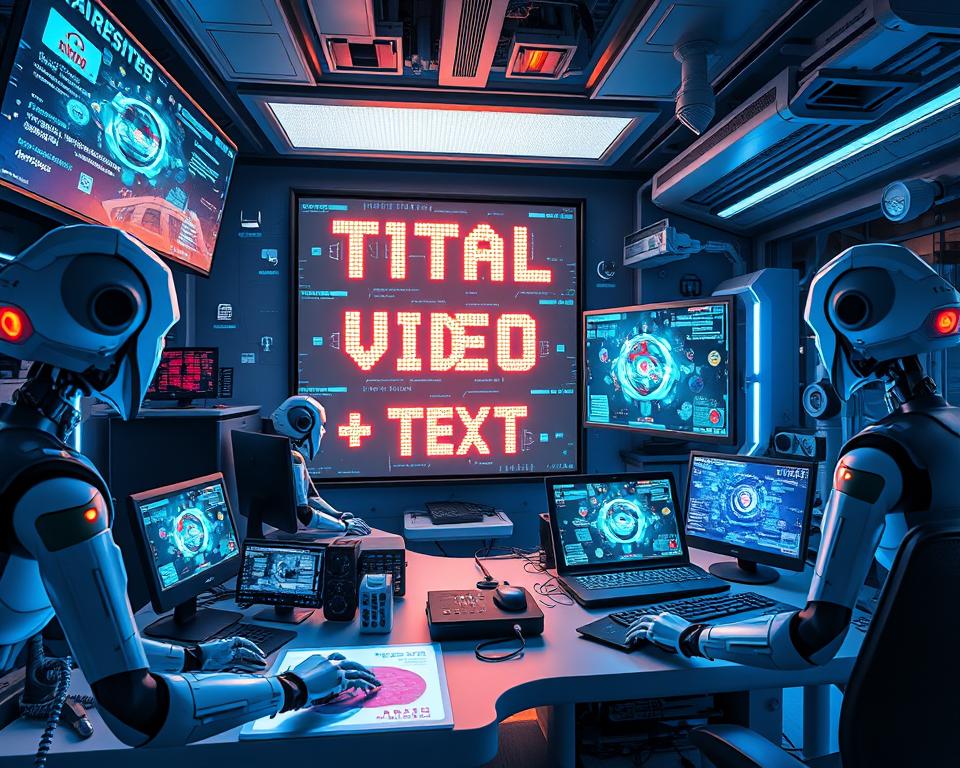
How AI Text to Video Technology Transforms Content Creation
AI text to video technology is changing how we make content in many fields. It turns text into videos that grab your attention. This makes making videos faster and opens up new ways to be creative.
From Text Input to Visual Output
AI video makers use smart learning to turn text into video scenes. This lets creators make videos quickly and easily. It cuts down on the hard work of making videos the old way.
Motion and Scene Generation
AI text to video tech uses smart language and learning to make videos look good. It lets creators try out many ideas and stories. They don’t have to worry about editing videos by hand.
Quality and Resolution Standards
AI video tech has gotten better, making videos in high definition 1080p. This means the videos look professional. It meets the needs of viewers and the digital world.
AI text to video tech changes content making in big ways. It automates the process, makes scenes from text, and meets high video standards. This makes making videos quicker, cheaper, and more creative for everyone.
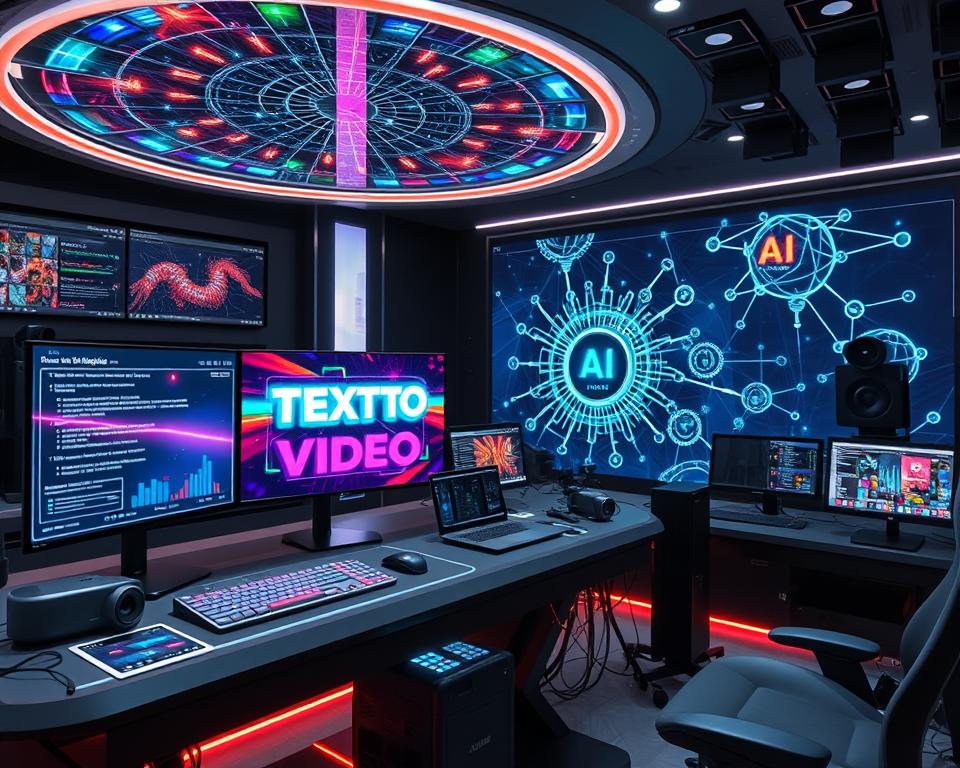
Advanced Features and Capabilities
In the fast-changing world of ai text to video tech, 2025 brings exciting new features. Multimodal ai will make videos more personal, matching what viewers like and do. This change will shake up how we make content.
AI text-to-video tech is making customer support videos that answer questions in real time. These videos help users and make support work easier. They offer solutions that fit each person’s needs.
AI is also making virtual presenters or avatars look and act more real. They can help with tutorials and educational videos. This makes learning more fun and engaging.
AI can now make voiceovers in many languages. This helps businesses share videos worldwide. It makes it easier to connect with people all over the globe.
AI is also helping with video planning by adding images to the process. This makes it easier to plan and visualize stories. It helps creators work faster and bring their ideas to life.
“The convergence of ai text to video technology, multimodal ai, and text to video generation is poised to redefine the future of content creation, offering unparalleled levels of personalization, automation, and global reach.
As AI text to video tech gets better, it will open up new ways for everyone. Businesses, creators, and viewers will all benefit from these advancements.
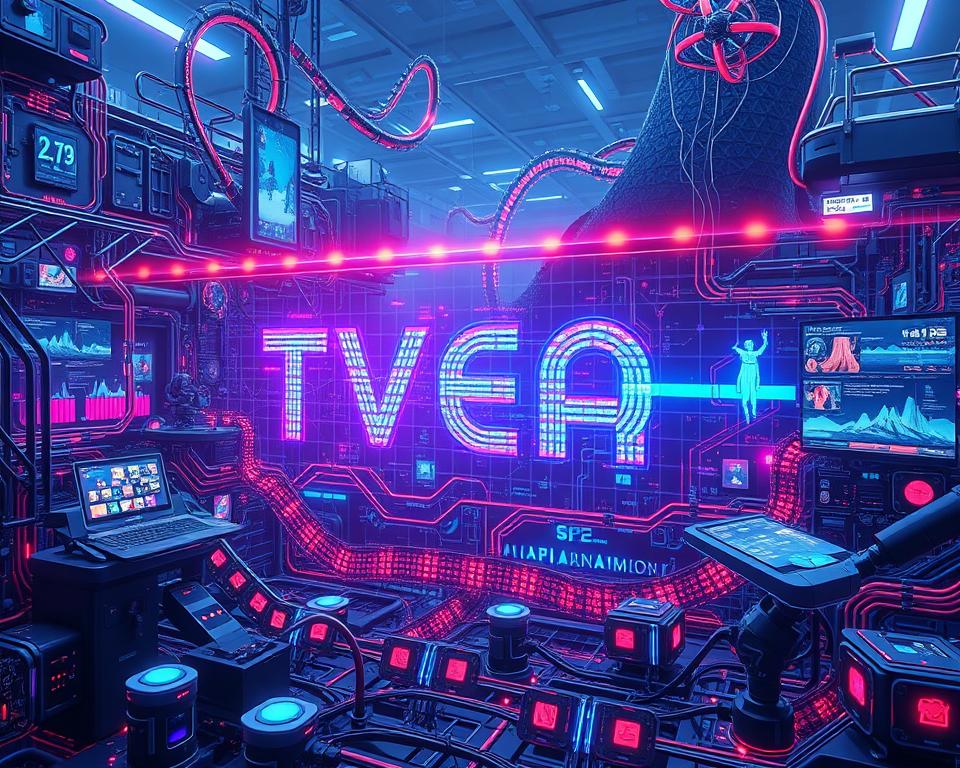
Applications and Industry Impact
AI text to video technology is changing many industries. In marketing and advertising, it makes videos for many people at once. This helps brands make ads and videos that really speak to their audience.
In entertainment and media production, it’s a big deal. It helps make special effects, move characters, and even whole scenes. This makes making movies and shows easier and opens up new ideas.
Ai text to video in education, it makes learning fun and interactive. It shows hard ideas in simple ways and lets students try things out online. Teachers can make learning fun and personal for everyone.
This tech is changing how companies talk to people. It’s making social media, customer service, and sharing content around the world better. It lets companies show off their best visual stories to their audience.
The use of ai video creation, text-to-video ai, and language-to-video technology is growing fast. It’s changing marketing, education, and more. The future of making content is looking very exciting, thanks to AI.
Conclusion
The AI text to video tech in 2025 is a big step forward in making content. It makes videos fast, personal, and in big numbers. This changes how we make and share videos in marketing and education.
It lets us make great, custom videos from just text. This opens up new ways to grab people’s attention and share info.
As AI text to video gets better, we’ll see more cool stuff. It’s not just a trend; it’s a big change in making videos. OpenAI’s Sora shows how AI can make videos that look real and professional.
AI text to video helps solve problems in making videos and helps small businesses online. It saves time and money, grows with you, and makes talking to people better. This tech gives businesses a big edge.
As AI gets smarter, making videos will be all about AI. This means new ways to connect with people and share ideas.
FAQ
What is AI text to video technology?
AI text to video technology turns written descriptions into video. It uses deep learning models. These models learn from lots of text and video pairs.
What are the core components of AI text to video technology?
The main parts are deep learning models and natural language processing. They analyze text, create visuals, and make scenes move.
What are some leading text-to-video AI models in 2025?
Top models include Sora from OpenAI and Runway Gen-3 Alpha. Also, Kling AI by Kuaishou and Luma Dream Machine are notable. MiniMax, CogVideoX, Make-A-Video by Meta, ModelScope by Alibaba, and Stable Video Diffusion are also leaders. Phenaki by Google rounds out the list.
How does AI text to video technology transform content creation?
It automates making videos from text. It creates scenes and motion from descriptions. This makes videos faster and more personal.
What are the advanced features of AI text to video technology in 2025?
New features include making videos very personal. It creates customer support videos and virtual presenters. It also makes voiceovers in many languages and adds AI images in video making.
What are the applications of AI text to video technology across industries?
It’s used in marketing, entertainment, and education. It’s also used in social media, customer support, and global content sharing. It changes how businesses talk to their audience.
Source Links
- https://fliki.ai/blog/how-to-make-ai-videos
- https://www.lemonlight.com/best-ai-video-generators/
- https://attentioninsight.com/ai-text-to-video-generators-what-are-they/
- https://medium.com/illumination/how-ai-is-transforming-video-content-with-text-to-video-technology-5f615e80b43b
- https://9meters.com/technology/ai/best-text-to-video-models
- https://www.xevensolutions.com/blog/best-ai-video-generators/
- https://www.synthesia.io/post/best-ai-video-generators
